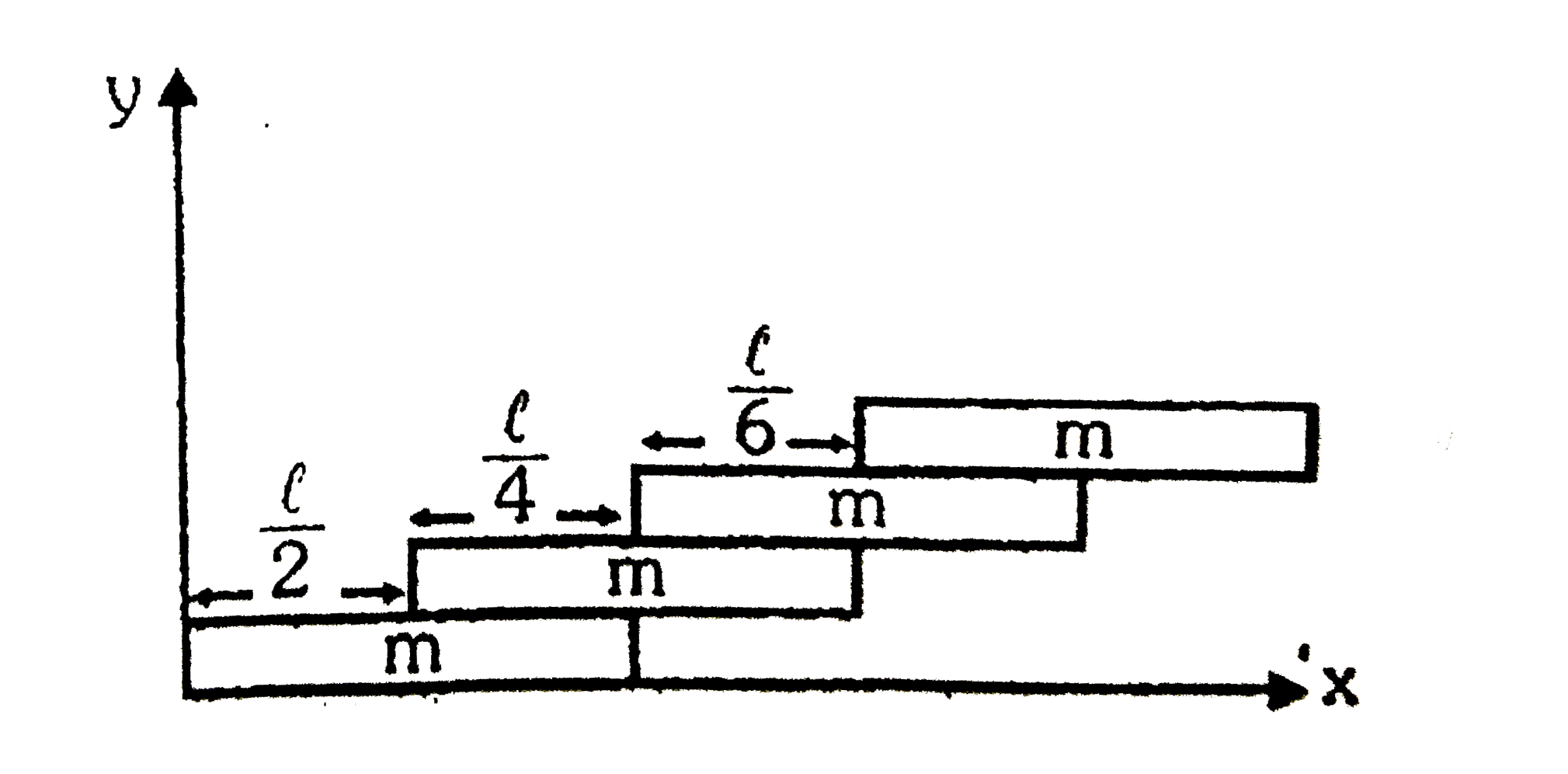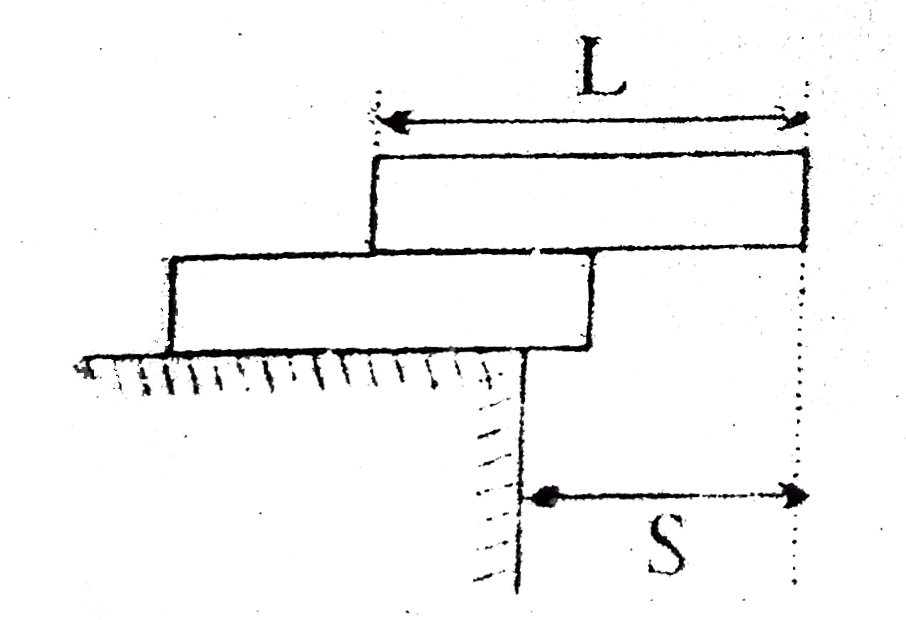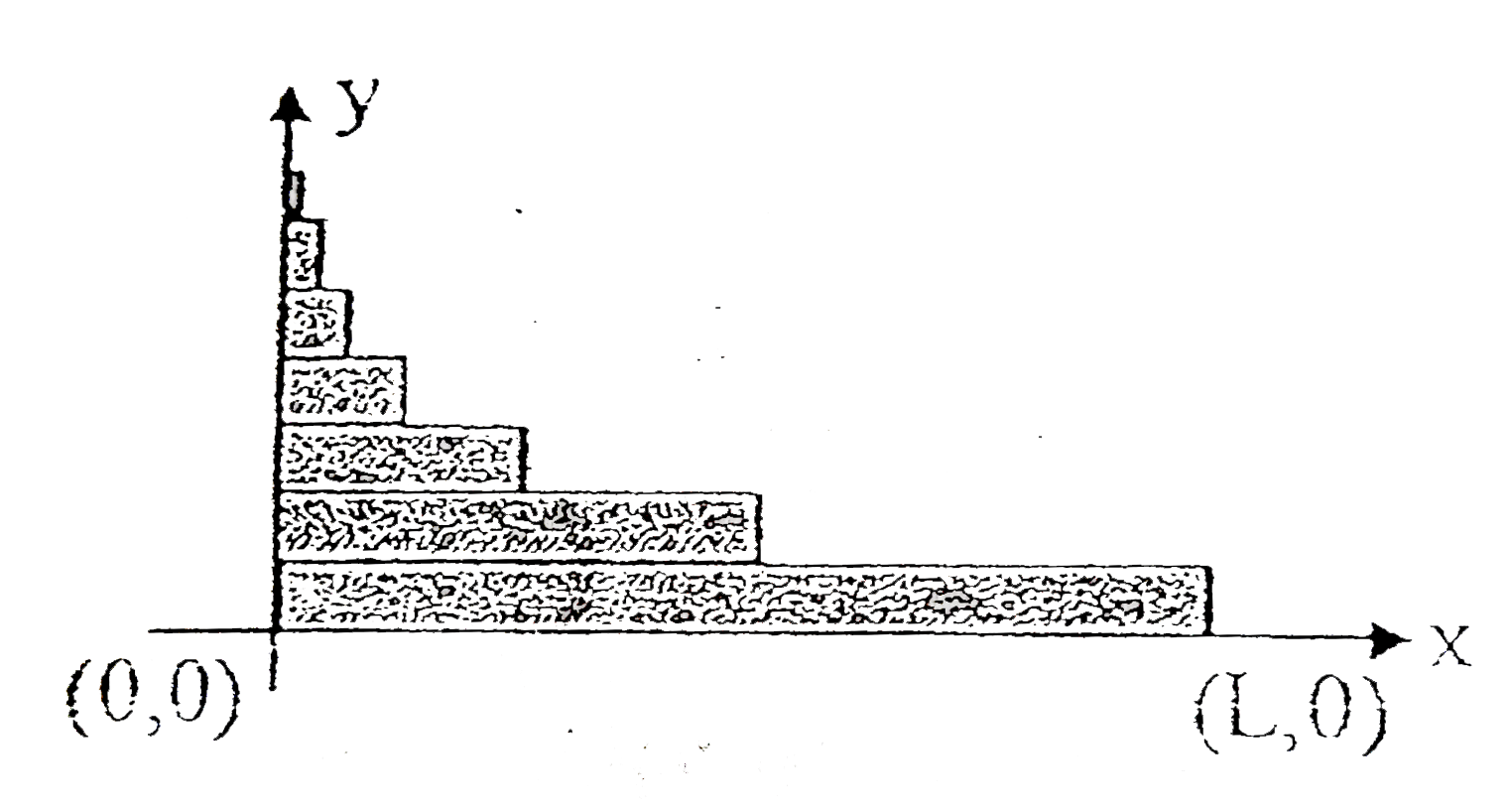Infinite number of bricks are placed one over the other as shown in the figure. Each succeeding brick having half the length and breadth of its preceding brick and the mass of each succeeding bricks being of the preceding one. Taking as the origin, the coordinate of centre of mass of the system of bricks is at

Topper's Solved these Questions
Similar Questions
Three bricks each of length L and mass M are arranged as shown from the wall. The distance of the centre of mass of the system from the wall is
 View Solution
View SolutionThere are 3 stair-steps as shown in the figure. Each stair step has width 25 cm, height 12 cm and length 50 cm. How many bricks have been used in it if each brick is 12.5cm×6.25cm×4cm
View Solution
Knowledge Check
- Question 1 - Select One
An infinite no of bricks are placed one over the other as shown in the figure. Each succeeding brick having half the length and breadth of its precceeding brick and the mass of each succeeding bricks 1/4th of the preceding one, take 'O' as the origin, the centre of mass of the system of bricks is at
 A−a7B−5a7C−3a7D−2a7
A−a7B−5a7C−3a7D−2a7 - Question 2 - Select One
Find the x coordinate of the centre of mass of the bricks shown in figure :
 A2425lB2524lC1516lD1615
A2425lB2524lC1516lD1615 - Question 3 - Select One
Two identical bricks of length L are piled one on top of the other on a table as shown in the figure the maximum distance S the top brick can overhand the table with the system still balanced is:
 A12LB23LC34LD78L
A12LB23LC34LD78L
Seven homogeneous bricks, each of length L are arranged as shown in figure. Each brick is displaced with respect to the one in contact by L10. Find the x-coordinate of the centre of mass relative to the origin shown.
 View Solution
View SolutionAn infinite number of particles each of mass m are placed on the positive X-axis of 1m,2m,4m,8m,... from the origin. Find the magnitude of the resultant gravitational force on mass m kept at the origin.
View SolutionThree identical spheres, each of mass 1 kg are kept as shown in figure, touching each other, with their centres on a straight line. If their centres are marked P, Q, R respectively, the distance of centre of mass of the system from P (origin) is
 View Solution
View SolutionInfinite rods of uniform mass density and length L,L/2,L/4….. Are placed one upon another upto infinite as shown in figure. Find the x-coordinate of centre of mass.
 View Solution
View SolutionA rod length L and mass M is placed along the x-axis with one end at the origin, as shown in the figure above. The rod has linear mass density λ=2ML2x, where x is the distance from the origin. Which of the following gives the x-coordinate of the rod's center of mass?
 View Solution
View Solution

